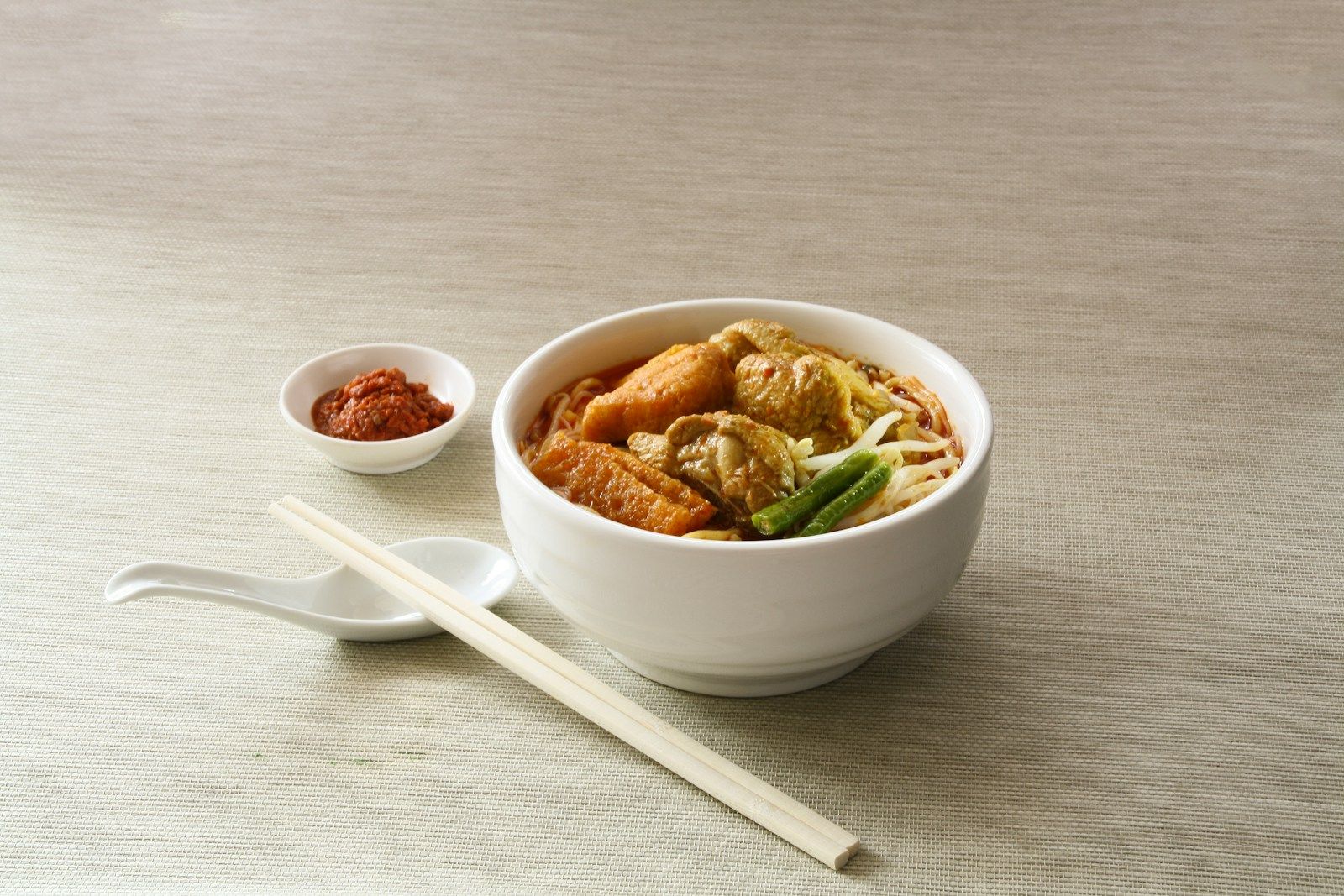
How many times have you gone to the grocery store, a twinkle in your eye, ready to snatch up that one specific candy or snack, only to find it’s just… gone? Poof! Vanished into thin air, leaving you standing there utterly confused and maybe even a little bit heartbroken. This isn’t some rare, isolated incident; it’s a phenomenon more common than you’d ever expect, playing out in grocery aisles nationwide year after year.
Every single year, handfuls of our most cherished snacks, refreshing drinks, and truly beloved food items silently slip away from grocery store shelves. It’s a cruel twist of fate, often due to factors like poor sales, emerging health concerns, the scarcity of key ingredients, or a whole host of other business-related decisions that we, the eager consumers, are rarely privy to. One moment, they’re winning us over with novel new flavors and textures, setting trends that we swear will last forever, and the next, they’ve disappeared as quickly as they first appeared.
So, let’s hit rewind and take a moment, shall we? A moment to collectively remember all those favorite foods that left us far too soon, before we even had the chance to give them a proper, tear-filled farewell. Get ready for a serious dose of nostalgia as we journey back to the days of lunchbox legends and after-school indulgences, celebrating the snacks that shaped our formative years, even if only for a fleeting time.
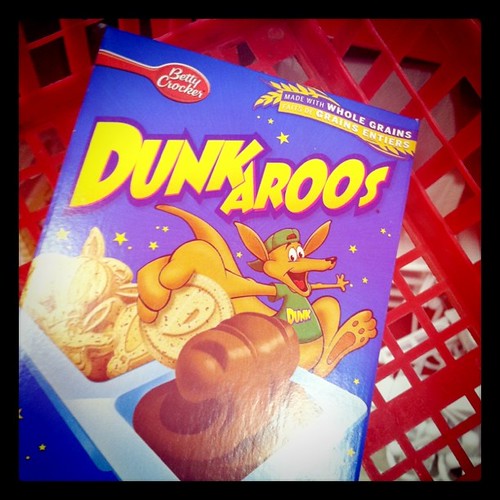
1. Dunkaroos
If you were a kid during the glorious ’90s, then your lunchbox or school cafeteria experience simply wasn’t complete without the sheer joy of tearing open a pack of Dunkaroos. These iconic cookies came packaged with a small well of icing, just begging for you to dunk your kangaroo-shaped biscuit into it. It was pure genius, really – a customizable snacking experience that had kids developing their own intricate dunking techniques, often involving the vanilla cookies and their irresistible rainbow sprinkle frosting.
Despite setting a trend for novel snack foods, the incredible popularity of Dunkaroos was, heartbreakingly, not destined to last forever. Sales gradually fizzled out, and by 2012, the product had been officially discontinued in the United States. The disappearance of Dunkaroos from American shelves left an entire generation of ’90s kids feeling utterly bereft, with some desperate fans even resorting to establishing unofficial ‘cookie smuggling’ routes from Canada, where the beloved snack remained available for a little while longer.
But here’s some genuinely good news that will warm your nostalgic heart: after years of persistent petitions, passionate social media campaigns, and an undeniable outpouring of love from fans, General Mills finally answered our collective prayers. The beloved snack made a triumphant return to the United States in the summer of 2020. This incredible comeback proved, without a shadow of a doubt, that sometimes, the power of food nostalgia is so strong, so utterly compelling, that it’s enough to resurrect even the most treasured of discontinued items!
Read more about: Remember These? A BuzzFeed Blast from the Past: 15 Retro School Snacks We Miss So Hard!
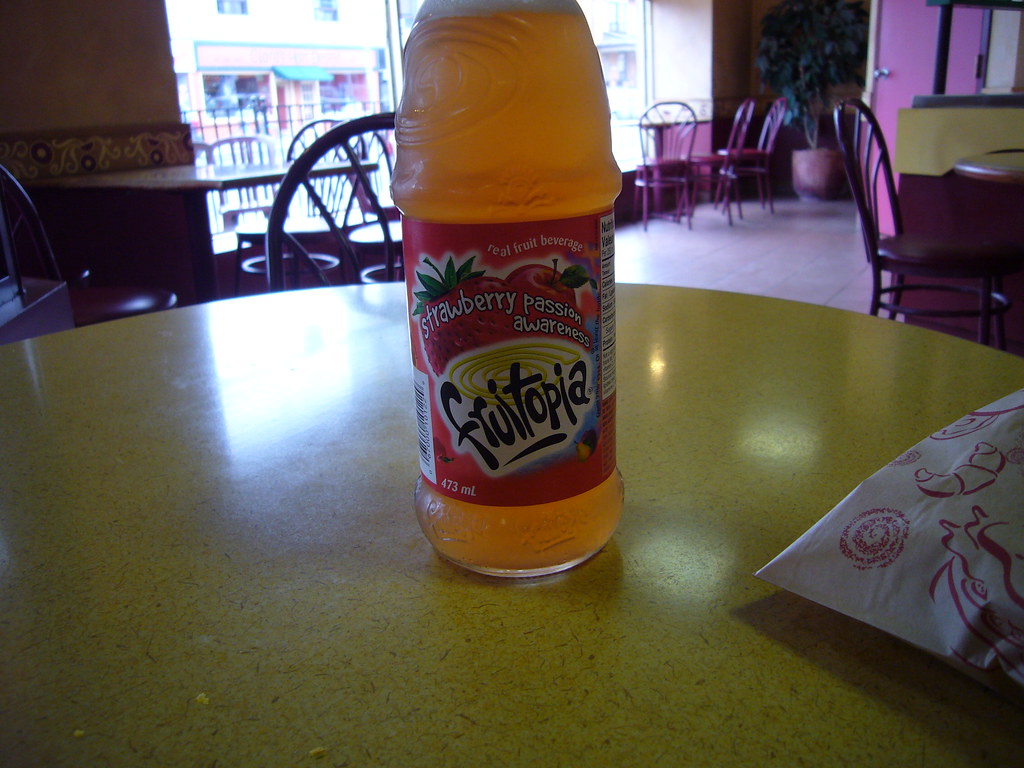
2. Fruitopia
For those of us navigating the beverage aisles in the ’90s, no shopping trip felt truly complete without grabbing a bottle of Fruitopia. This wasn’t just any drink; it was a vibrant, neon-colored, and wildly named beverage that encapsulated a whole vibe. My friends and I would happily spend our hard-earned allowance on bottles of ‘Strawberry Passion Awareness’ or ‘Fruit Integration,’ convinced we were somehow making a rebellious statement against corporate America, all while ironically consuming a Coca-Cola product.
Launched in 1994, Fruitopia was Coca-Cola’s ambitious answer to the booming popularity of Snapple. It stood out distinctly with its famously trippy commercials, which featured mesmerizing kaleidoscopic visuals and profound, almost philosophical musings. The fruity beverage quickly ascended to the status of a cultural touchstone of the decade, even making memorable appearances in popular media like The Simpsons, cementing its place in the pop culture lexicon.
However, after the turn of the millennium, sales began to steadily decline, and by 2003, Fruitopia had largely disappeared from American grocery store shelves, seeming to gradually fade away over the following months. While its spiritual successor, Minute Maid Fruit Works, eventually appeared, it never quite managed to capture the same mystical essence, the unique charm, or the devoted following that made the original Fruitopia such an incredibly memorable and cherished drink.
Read more about: Remember These? A Trip Down Memory Lane with 14 U.S. Foods That Vanished Too Soon!

3. Oreo O’s Cereal
Cookie cereal for breakfast? Yes, please, and thank you! Oreo O’s were, for many of us, the ultimate sneaky way to convince our parents that we were actually eating a proper breakfast, when in reality, we were basically indulging in dessert at 7 AM. Those distinctive chocolate rings, playfully speckled with white creme bits, had an almost magical ability to transform ordinary milk into a rich, chocolatey dream—a feat that no other cereal, before or since, has truly been able to match.
This brilliant breakfast invention was launched in 1997 by the collaborative efforts of Post and Kraft Foods, instantly giving cookie lovers everywhere a perfectly legitimate excuse to start their day with the iconic flavors of an Oreo. What made it even better was the fact that the cereal wasn’t just ‘Oreo-flavored’; it contained actual, real Oreo cookie bits, making it an authentically indulgent and utterly irresistible morning treat that quickly garnered a massive fan base.
Tragically, after a decade of deliciousness, Oreo O’s cereal disappeared from U.S. shelves in 2007, a casualty of a corporate split between Post and Kraft. For nearly ten years, South Korea became the only place in the world where you could find this legendary discontinued item. Thankfully, Post finally recognized the overwhelming demand and reintroduced it stateside in 2017, although, much to the dismay of purists, the marshmallow bits from the original recipe did not make the comeback cut.
Read more about: Pantry Alert! 10 ‘Healthy’ Snack Traps and the Delicious, Low-Sugar Swaps You Need to Know Now
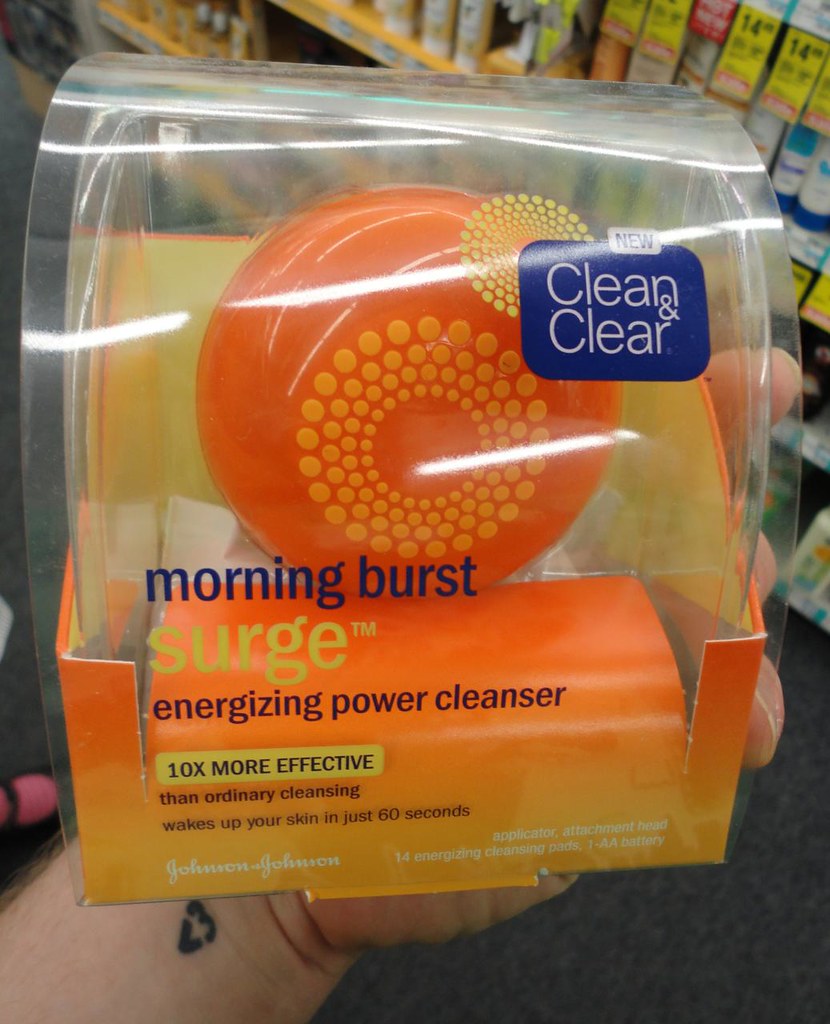
4. Surge
Oh, Surge! That iconic green, intensely flavored, and undeniably potent citrus soda, absolutely loaded with more caffeine and sugar than any growing teenager probably needed, was nothing short of liquid courage for countless kids like me. I remember chugging it before attempting daring skateboarding tricks that, more often than not, ended with nothing more heroic than scraped knees. Its vibrant, almost radioactive appearance screamed ‘extreme’ in every conceivable way, perfectly capturing the edgy vibe of the mid-90s.
Coca-Cola launched Surge in 1996 with a very clear mission: to directly compete with the seemingly insurmountable popularity of Mountain Dew. They marketed it aggressively, targeting adrenaline-seeking teenagers with its memorable and highly effective slogan: “Feed the Rush.” The drink quickly developed an ardent cult following, a testament to its unique flavor and intense energy boost. So, when it was unceremoniously discontinued in 2003, its devoted fans absolutely refused to let it go quietly into the night.
In an incredible display of consumer power, the dedicated “SURGE Movement” Facebook group managed to rally enough support and vocal passion to convince Coca-Cola to bring the beverage back. In 2014, Surge returned, initially as an Amazon exclusive, proving that sometimes, consumer passion and persistent collective effort can actually work wonders! While it’s now available in limited distribution, many original fans claim that the reformulated version doesn’t quite match the intense, electrifying formula of their youth.
Read more about: Decoding ‘Woke’: A Deep Dive into the Term’s Origins, Evolution, and Its Reshaping of Business and Political Discourse
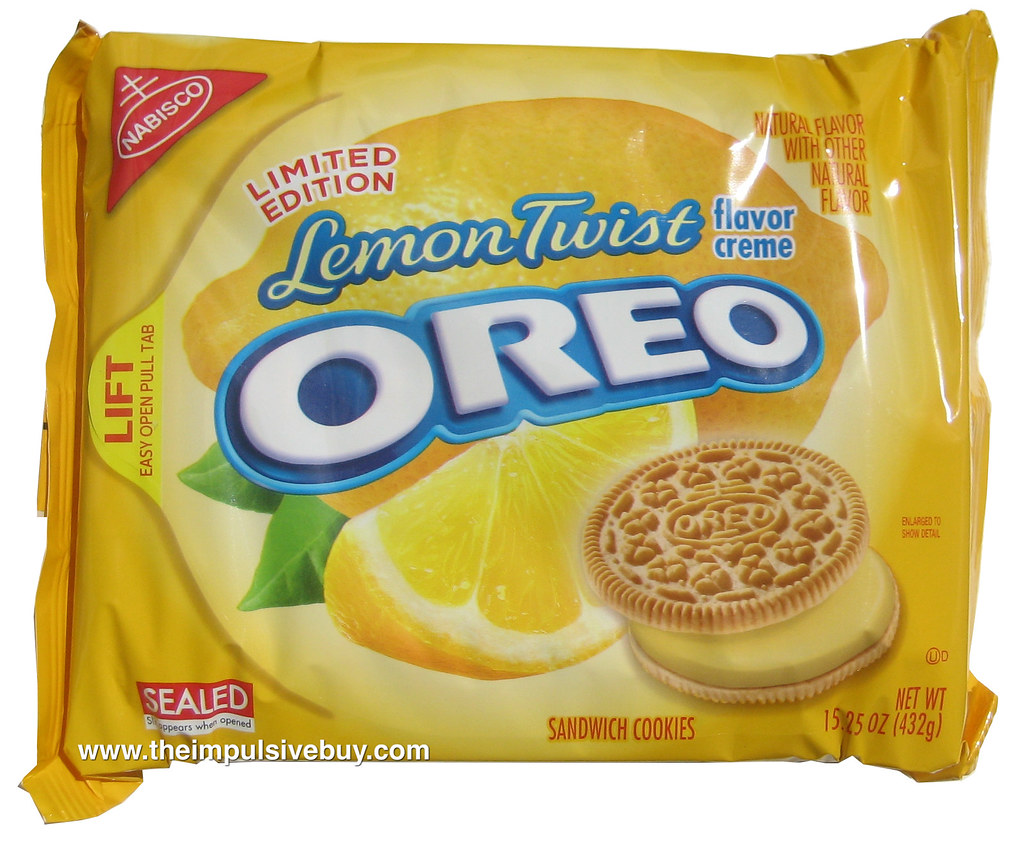
5. Lemon Twist Twinkies
The humble, ubiquitous Twinkie, that classic golden sponge cake, received a truly zesty and unexpected makeover with the introduction of Lemon Twist, and for many, their taste buds were never quite the same. Unlike their more traditional vanilla-creme-filled counterparts, these bright yellow, cheerful treats packed a wonderfully refreshing citrus punch. This tangy surprise made them an absolutely perfect choice for summer snacking, a delightful departure from the standard sweet indulgence.
Hostess introduced this delightful variation sometime in the 1980s, filling their signature golden sponge cake with a vibrant, tangy lemon cream instead of the familiar, comforting traditional vanilla. The combination was surprisingly sophisticated for a packaged snack cake, striking a perfect and delicious balance between sweet and tart. It was a flavor profile that truly stood out, offering a burst of freshness that distinguished it from other mass-produced treats of the era.
When the unfortunate news of Hostess facing bankruptcy emerged in 2012, Lemon Twist Twinkies were among the many beloved casualties that, sadly, did not make the cut for the company’s eventual comeback. While regular Twinkies did return to shelves after the company successfully restructured, the lemon variety remains nothing but a sweet, tangy memory. Occasionally, there have been limited runs of lemon-flavored Twinkies, but fans of the original lament that these newer iterations never quite manage to capture the perfect pucker and distinctive zest of the original Lemon Twist.
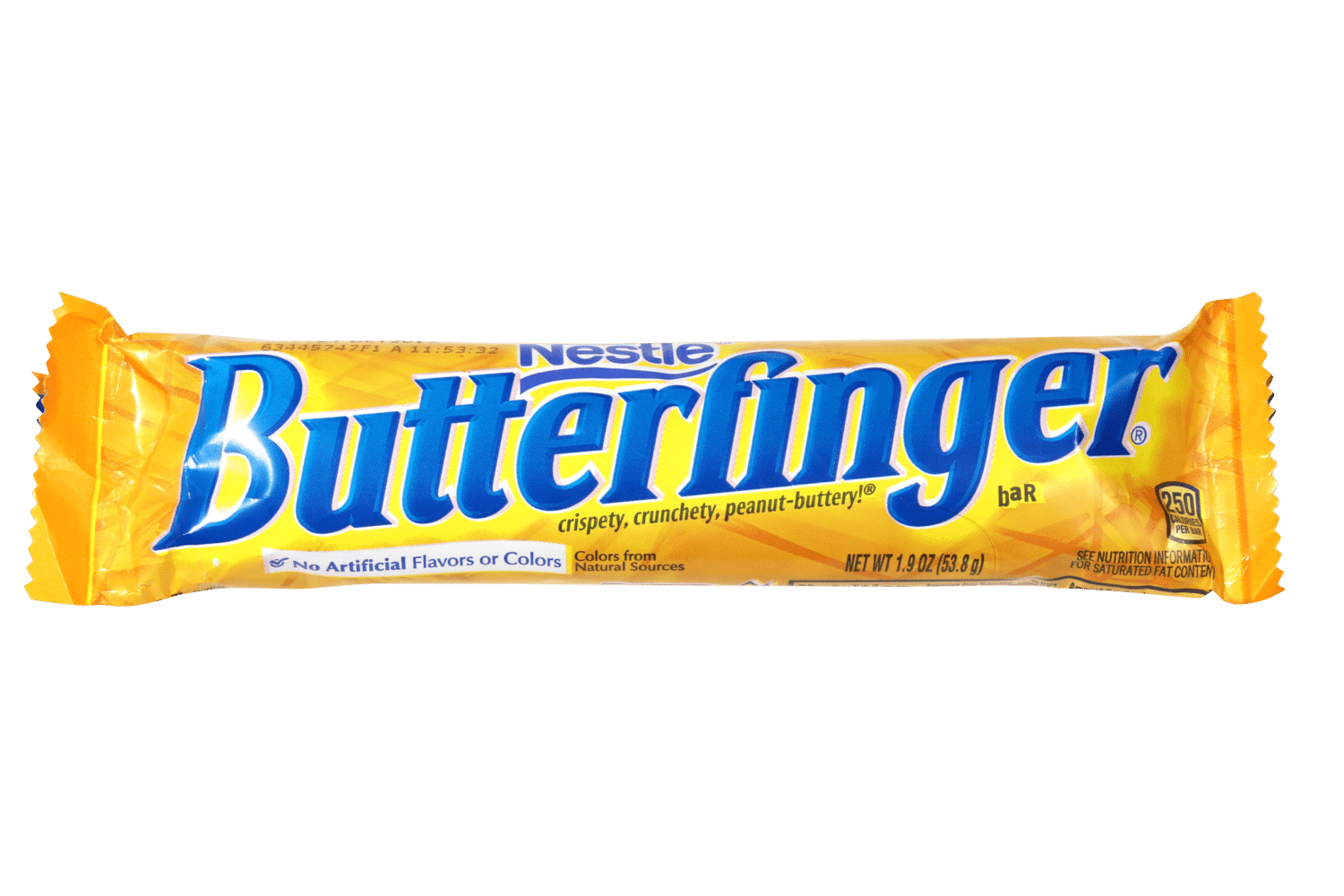
6. Butterfinger BB’s
Oh, Butterfinger BB’s! Popping these little, irresistible chocolate spheres, each one filled with Butterfinger’s signature, gloriously crispety-crunchety peanut butter center, was an absolutely addictive experience. I can vividly recall sneaking containers of them into movie theaters, where they’d inevitably, and frustratingly, roll under seats after I’d invariably fumble the container in the dark. But every single delicious one was worth the effort of retrieval!
Launched in 1992, Butterfinger BB’s truly revolutionized candy consumption by ingeniously transforming the classic, somewhat messy Butterfinger bar into a more convenient, shareable, and utterly poppable format. The genius was in the spherical design, which somehow managed to maximize that perfect chocolate-to-filling ratio, all while minimizing the notorious Butterfinger problem of shattering into a million pieces the moment you dared to bite into it. It was a true innovation in candy engineering!
Cruelly, and to the widespread heartbreak of candy lovers nationwide, Nestlé made the devastating decision to discontinue BB’s in 2006. Despite countless petitions, impassioned social media campaigns, and a constant clamor from devoted fans, Nestlé has, to this day, steadfastly refused to bring them back. While a later introduction of Butterfinger Bites in a cube form tried to fill the void, it was, for many, a poor and unsatisfying substitute that simply lacked the perfect balance and deeply gratifying mouthfeel of the original spherical delights.

7. Strawberry Rice Krispies
Mornings got a wonderfully berry-beautiful makeover with the introduction of these naturally pink, puffed rice morsels. Strawberry Rice Krispies weren’t just a cereal; they transformed breakfast into a truly special occasion. The delicious strawberry-infused cereal had a charming way of turning your milk into a delicate, appetizing pink shade, making every single breakfast bowl feel like a little celebration, a vibrant start to the day that kids absolutely adored.
Kellogg’s, always innovating, introduced Strawberry Rice Krispies in 1983, giving their classic, beloved cereal a delightfully fruity twist that immediately captivated children. What made these particularly noteworthy, especially compared to many other colored cereals that relied heavily on artificial dyes, was that these actually got their appealing pink hue from real, authentic strawberry juice. This made parents slightly less hesitant about pouring a bowl, seeing it as a somewhat ‘healthier’ option.
Despite boasting a devoted following and being a cherished part of many childhoods, Strawberry Rice Krispies quietly disappeared from grocery store shelves in the early 2000s. While Kellogg’s has, in the years since, released various limited-edition strawberry varieties, including a ‘Strawberry Krispies’ version in 2019, loyal fans of the original vehemently insist that these newer iterations simply lack the perfect balance of sweetness and that unmistakably authentic strawberry flavor that made the original so incredibly special and memorable.
Read more about: Honest Question: What Gives? 12 Once-Popular American Eats Nobody Touches Now
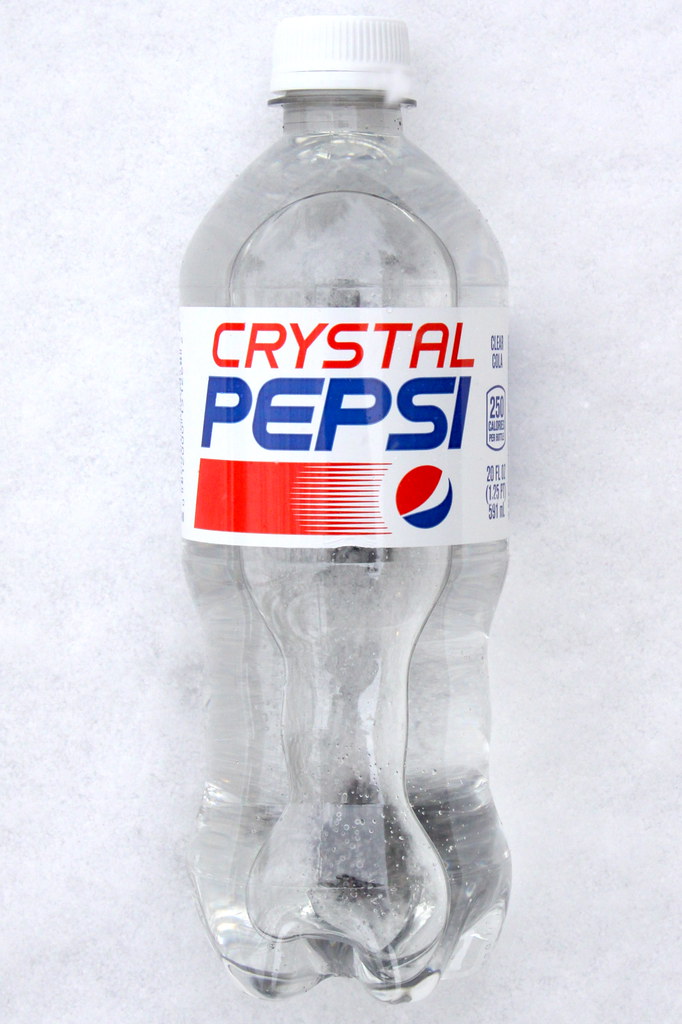
8. Crystal Pepsi
A cola that looked like water but tasted unmistakably like Pepsi? My teenage brain was absolutely blown! Crystal Pepsi was more than just a drink; it was a phenomenon that perfectly embodied the early ’90s obsession with clarity and purity, promising all the classic Pepsi flavor without the dreaded caramel coloring. It felt like we were drinking the future, a truly wild concept for a soda.
Launched nationwide in 1993, after some wildly successful test marketing, Crystal Pepsi was PepsiCo’s bold attempt to tap into a growing consumer trend. This trend favored products that appeared clearer, cleaner, and, by extension, seemingly more natural, even if it was just clever marketing. The clear cola came with an iconic commercial featuring Van Halen’s “Right Now,” a track that perfectly captured the era’s optimistic, edgy futurism and made you feel like anything was possible, even transparent soda.
Despite its initial buzz and novelty, Crystal Pepsi ultimately fizzled out within a year, proving that sometimes, being too innovative can be a double-edged sword. The sheer novelty wasn’t quite enough to sustain long-term sales, and Pepsi’s subsequent attempt to reformulate it with a more citrusy flavor only served to confuse consumers further, muddying the waters, literally. While it’s made a few limited-time comebacks driven by powerful ’90s nostalgia, Crystal Pepsi remains a fascinating, slightly baffling example of a product that might have been just a little too far ahead of its time, a clear (pun intended) testament to daring experimentation.
Read more about: Why Celebrity Endorsements Fall Flat: Strategic Pitfalls and Lessons for Sustainable Brand Growth
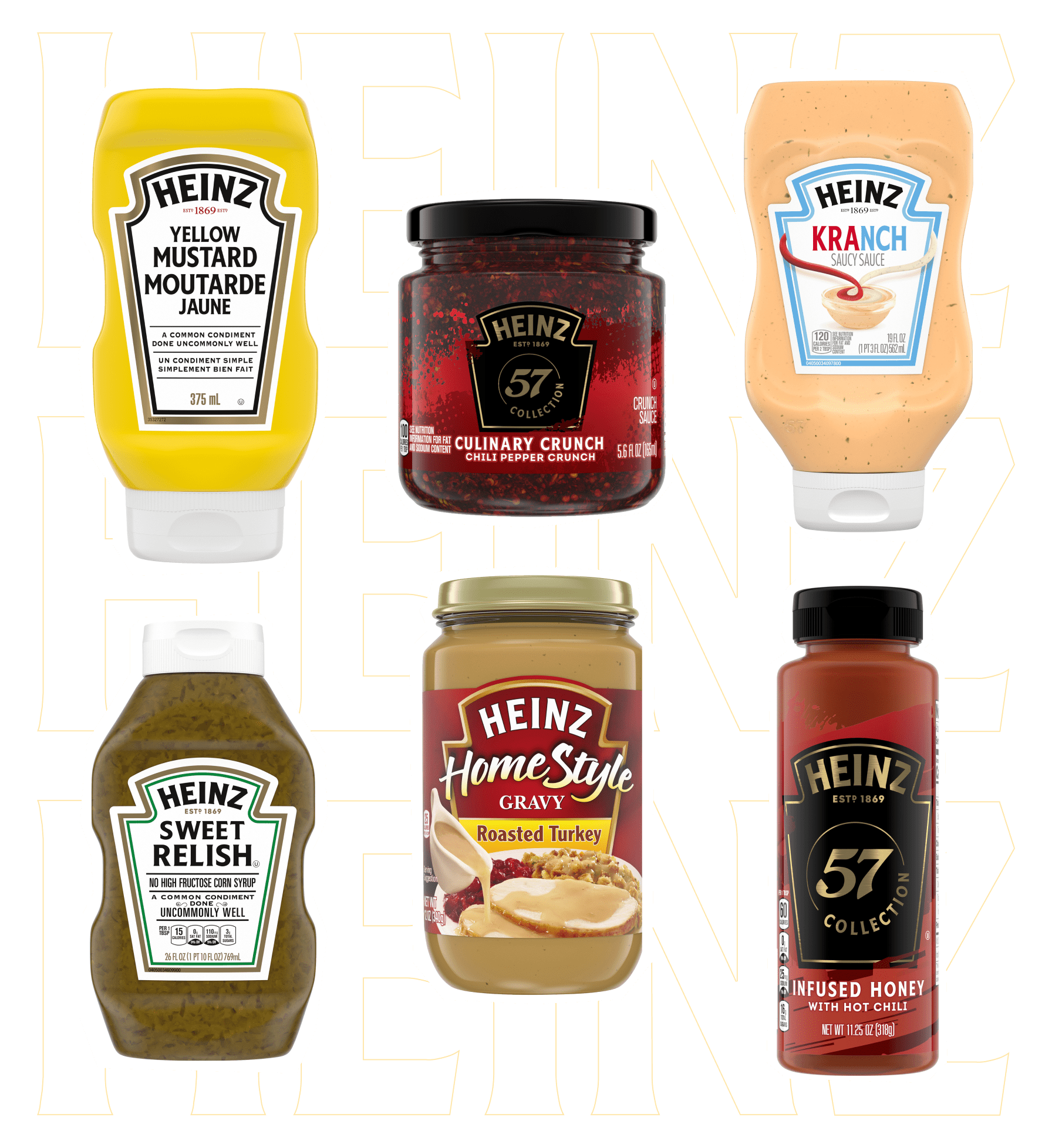
9. Heinz EZ Squirt
Purple ketchup on my hot dog? Green ketchup on my fries? Absolutely! As a kid, I felt like a mad scientist, an avant-garde culinary artist, when Heinz EZ Squirt burst onto the scene, allowing me to add the most bizarre and vibrant colors to my plate. Meanwhile, I’m pretty sure parents across America watched in a mix of horror and mild amusement as their children gleefully doused perfectly good food with green, purple, and blue condiments, turning every meal into a whimsical, if slightly unnatural, art project.
Launched with a bang in the year 2000, Heinz EZ Squirt arrived in a specially designed bottle, perfectly shaped for kids’ smaller hands, making it even easier for them to unleash their inner Picasso. The initial “Blastin’ Green” version was strategically tied to the release of the movie Shrek, a marketing masterstroke that absolutely captivated young audiences. It soared off shelves, selling over an incredible 10 million bottles in its very first year, unequivocally proving that children, given the chance, will indeed eat anything if it looks weird, wacky, and fun enough.
However, as is often the case with novelty items, the vibrant allure eventually began to fade. The initial excitement wore off after a few years, and by 2006, all the colorful variants of EZ Squirt had quietly, and perhaps mercifully, disappeared from grocery store shelves. While the fun, unexpected colors were undoubtedly the product’s primary selling point and what made it a household name, they were also, ironically, its ultimate downfall. It turns out that, eventually, most people prefer their food to actually look like food, not like an abstract expressionist painting gone gloriously, or terrifyingly, wrong.
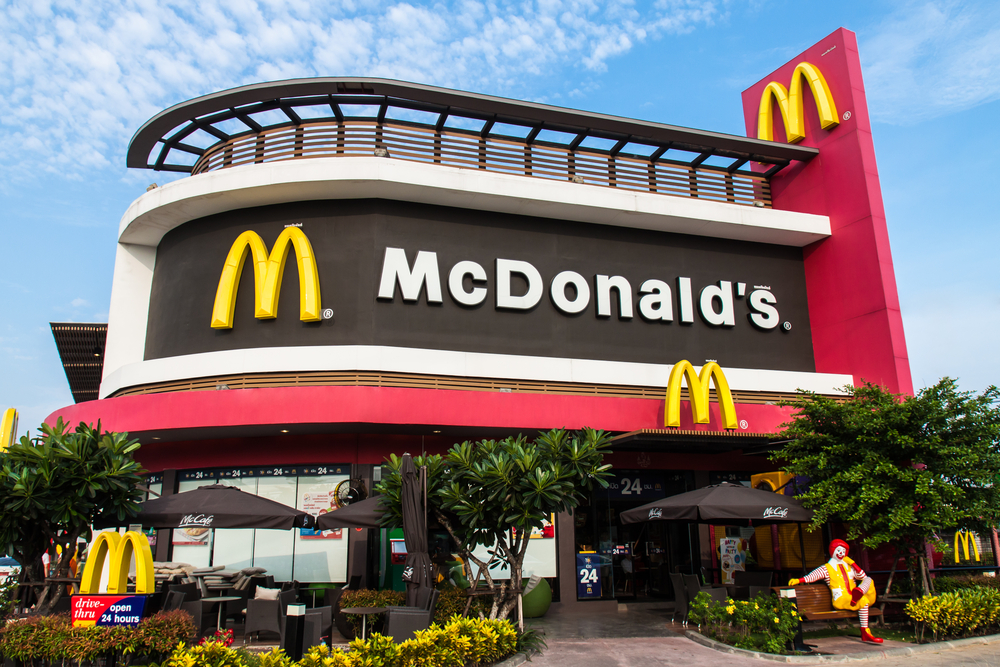
10. McDonald’s Arch Deluxe
Ah, the McDonald’s Arch Deluxe – the infamous “grown-up” burger that, frankly, was a little *too* fancy for its own good. I recall saving up my teenage dollars to try this supposedly sophisticated sandwich, only to take a bite and wonder why anyone would ever mess with the perfectly crafted, classic McDonald’s formula. It was a bold, confusing departure for my youthful palate, accustomed to the comforting familiarity of a Big Mac.
Launched in 1996, the Arch Deluxe wasn’t just another menu item; it was backed by a colossal $100 million marketing campaign, one of the most expensive in fast-food history. This culinary experiment featured a quarter-pound beef patty on a bakery-style potato roll, adorned with crisp lettuce, ripe tomato, onions, ketchup, and a mysterious “secret” mustard-mayonnaise sauce. What made the campaign truly memorable, though, was its explicit targeting of adults, even showcasing kids being outright disgusted by the burger – a rather questionable strategy for a family restaurant.
Despite its development by a renowned chef and massive promotional push, the Arch Deluxe failed spectacularly. It was quietly, and quickly, discontinued by 1998, just two short years after its grand debut. Its legacy endures as a cautionary tale, a very expensive lesson for McDonald’s: their loyal customers generally aren’t seeking culinary sophistication. They want the classics, the comfort, and the consistent taste that has defined the brand, not a burger that makes their kids gag.
Read more about: McDonald’s is Going All Out! Your Ultimate Guide to Scoring Epic Deals, from 50-Cent Double Cheeseburgers to Free Fries and Beyond!

11. Sunkist Fun Fruits
These weren’t just any fruit snacks; they were tiny, vibrant, jewel-toned portals to elementary school social currency! Trading Sunkist Fun Fruits at lunch was a serious, high-stakes business on the playground. Certain desirable flavors, perhaps the elusive grape or universally loved orange shapes, commanded premium bargaining power, making you the envy of your peers if you had a fresh pack. They were the edible gold standard of the lunchbox, a sweet reward for surviving another morning.
First introduced in the glorious 1980s by the iconic Sunkist brand, these gummy fruit snacks came in instantly recognizable, distinctive shapes that mirrored actual fruits—little oranges, plump grapes, and perfectly formed strawberries. What truly set them apart was their firm-yet-chewy texture. They offered a satisfying resistance when you bit into them, a deliberate chewiness that wasn’t overly soft or sticky, before gracefully melting into a burst of intensely fruity goodness. It was a texture that truly defined the “fruit snack” category.
Over the years, like many beloved snacks of that era, Sunkist Fun Fruits unfortunately changed hands through various corporate acquisitions, and with each new owner, the original, cherished formula seemed to alter. Eventually, the truly original Fun Fruits disappeared altogether. While a myriad of other fruit snacks have since tried to fill the void, us ’80s and ’90s kids know nothing has quite matched the perfect texture and that unmistakably intense, authentic fruit flavor that made the original so incredibly special.

12. Cinnabon Cereal
Imagine the intoxicating aroma of freshly baked cinnamon rolls, captured and distilled into cereal form for your breakfast bowl! That, my friends, was the sheer genius of Cinnabon Cereal. It effortlessly transformed my morning routine into a delightful cinnamon roll experience, offering all the signature Cinnabon deliciousness with none of the sticky fingers or early morning baking guilt. Kellogg’s launched this brilliant creation in the early 2000s, teaming up with the beloved mall staple, Cinnabon, to craft a cereal that was nothing short of a masterpiece.
Each tiny, swirl-shaped piece was meticulously dusted with that perfect blend of cinnamon and sugar, replicating the iconic Cinnabon topping. To truly complete the miniature pastry illusion, these delightful pieces even featured delicate, white icing-like drizzles, making every single spoonful an authentic, indulgent, and utterly satisfying replica of the real deal. It was a breakfast dream come true for cinnamon roll aficionados.
Despite garnering a dedicated fanbase, Cinnabon Cereal, much to the dismay of many, disappeared from shelves around 2009. Online petitions and social media campaigns have called for its return, but Kellogg’s has since pivoted to other cinnamon-flavored offerings. Yet, for many purists, none of these newer iterations have ever quite managed to capture the authentic Cinnabon experience that made the original cereal so incredibly special.

13. Oreo Big Stuf
This wasn’t just another Oreo; this was an *event*! Each Oreo Big Stuf was a magnificent, 316-calorie monster cookie, roughly the size of a hockey puck, demanding serious commitment to finish. I remember countless afternoons with friends, timing each other to see who could conquer one of these colossal cookies fastest. It was a delicious challenge, a test of endurance, and a testament to the over-the-top snacking culture of the era.
Nabisco introduced this supersized treat in the 1980s, creating a single-serve Oreo approximately ten times the size of its regular counterpart. The packaging proudly advertised it would take a whole 20 minutes to eat—an unusual selling point. Yet, for us kids, it only added to the legend and allure of this magnificent confection.
Alas, Oreo Big Stuf disappeared from shelves in 1991, after a memorable run. Its demise coincided with growing nutritional awareness, as a single cookie contained nearly a quarter of a child’s recommended daily calories. Today, it lives on as a cherished, nostalgic reminder of the excessive 1980s, when bigger was always better – especially for cookies.
Read more about: The True Cost of ‘Peace of Mind’: 13 Critical Reasons Why Extended Warranties for Your Appliances Are Rarely Worth It
Wow, what a trip down memory lane, right? It’s wild how these snacks, once the kings and queens of our grocery carts and lunchboxes, can just… vanish! Whether it was due to changing tastes, corporate shake-ups, or even an executive’s personal dislike for peanut butter (we’re looking at you, Mars family!), each of these treats left an indelible mark on our childhoods and our hearts. They might be gone, but the memories of dunking, squirting, or just plain chugging them will definitely live on. Here’s to hoping that maybe, just maybe, some of these fallen heroes get their own triumphant comeback tours someday! Until then, we’ll keep dreaming of the crispety-crunchety goodness that once was.



